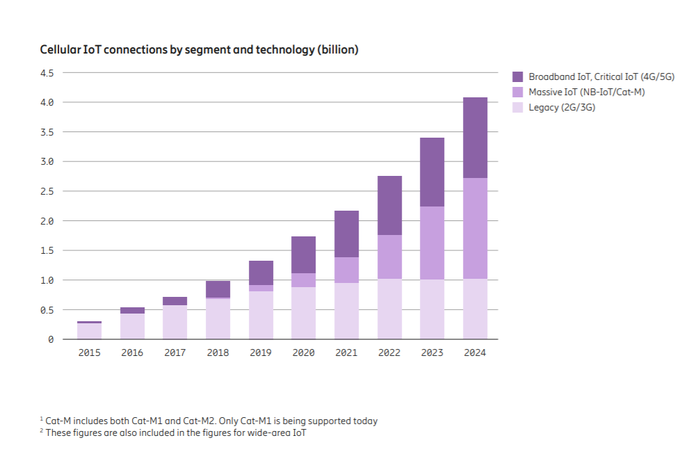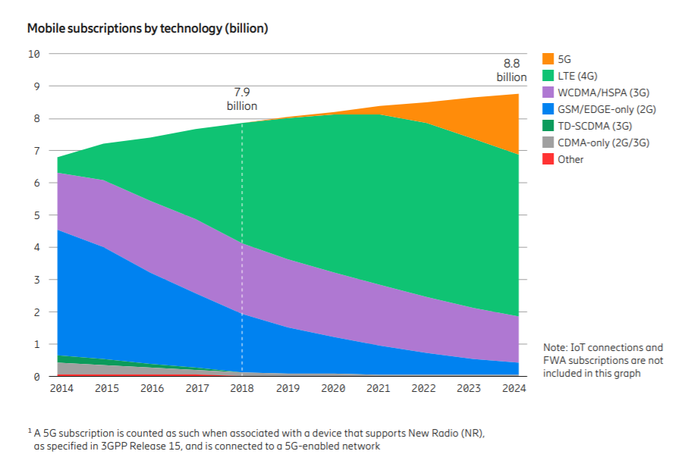5G: Ericsson Promises Rapid Growth as Telcos Stumble
"A precocious youth" is how one journalist describes 5G.

Channel partners face challenges aplenty as they consider how to take advantage of fifth-generation (5G) mobile network standards.
Ericsson’s June 2019 Mobility Report projects 1.9 billion 5G subscriptions for enhanced mobile broadband five years from now. Adoption of the technology is still in its infancy, as Ericsson anticipates the number of 5G subscribers to exceed $10 million by the end of this year.

Stratix’s Marco Nielsen
The most obvious benefit is that 5G will quicken and expand the mobile data that businesses use. Video is a huge component, according to Marco Nielsen, vice president of managed mobility services for Stratix. And the numbers support him. Ericsson concluded that video traffic in mobile networks will grow 34 percent annually through 2024 and go from comprising 60% of all mobile traffic to about 75%.
And 5G will enable much more than video.
“Lower latency will create increased capabilities for remote work,” Nielsen said. “Many critical use cases like manufacturing, health care and controlling equipment will now be accessible from anywhere, in real time.”
It’s hard to talk about 5G without talking about the internet of things. Ericsson predicts 45% of cellular IoT connections to be driven by Narrowband IoT (NB-IoT) or Cat-M technology in 2024. The majority of devices previously ran on 2G and 3G connections, but NB-IoT and Cat-M deploy on top of LTE networks. T-Mobile, AT&T and Verizon have launched NB-IoT networks in the last year.

Source: Ericsson Mobility Report June 2019
But analysts have pointed to a slew of problems associated with 5G in recent weeks.
Light Reading’s Iain Morris this week cataloged missteps AT&T and Verizon have taken in their efforts to go to market quickly. Standardization and interoperability issues stemmed from the decision to “fast-track the technology as if it were a precocious youth.”
Morris reported that street obstructions disrupted a Verizon mobile 5G test in Chicago. Max Silber, MetTel‘s vice president of mobility with, recently said on our podcast that 5G doesn’t penetrate buildings as efficiently as 4G LTE.
“Don’t expect the same type of rollout,” Silber said. “Expect a lot of what we’re working on right now — getting that in-building coverage done and ready in preparation for 5G to be launched in various cities.”
#5G is expected to cover up to 65% of the world’s population in 2024 – making distance less relevant than ever. Get a peek at the future with the Ericsson #MobilityReport: https://t.co/oZ38LtkkzV pic.twitter.com/q8KQi5wkN9
— Ericsson Networks (@EricssonNetwork) June 12, 2019
Nielsen said the major U.S. telecos are racing to provide 5G services and doing so with limited functionality.
“A critical component of their 5G deployment going forward will be the backhaul high-speed Internet connectivity,” Nielsen said. “Without this crucial backbone, the data speeds will only be as fast as your local tower can output to your device.”
Nielsen said companies will need to double down on their security efforts, especially as bring-your-own-device policies become more common. Some industry figures have suggested that increase of mobile traffic will make protecting data more difficult. Yasir Liaqatullah, vice president of product management for A10 Networks, told Channel Partners last month that artificial intelligence is becoming a must.
“If an attack happens, the service provider has to go through all of this traffic and all of these connections, identify the attack and then automatically put preventive measures in against that, mitigate that attack, create a report and take the network back to normal,” Liaqatullah said.
Nielsen advised partners to begin their 5G adoption journey by gathering information on the geographical coverage areas of their customers, 5G-enabled technologies such as augmented reality contained in the customer road maps, and the ideal vendors to fit the clients’ needs.
5G is the talk of the town, but it should be noted that 4G isn’t …
… going away anytime soon.
The yearly increase in 5G subscriptions will be “significantly faster” than the progression that followed 4G LTE’s 2009 launch, but LTE subscriptions are expected to peak in 2022 at approximately 5.3 billion. The study agreed with Verizon’s senior director of emerging technology, who told partners that his company’s 4G network will be working throughout the next decade.
“LTE will remain the dominant mobile access technology by subscription for the foreseeable future,” the report authors wrote.

Source: Ericsson Mobility Report June 2019
Ericsson estimated that there were currently 7.9 billion mobile subscriptions and 5.7 billion subscribers in the first quarter of this year, representing a 2% growth.
Last month we reported AT&T Channel Chief Stacey Marx declaring that business customers, not consumers, will lead the 5G revolution.
“It is ripe for opportunity for us to go out and grab it and define it and work on it,” she told partners at a TBI event.
Read more about:
AgentsAbout the Author(s)
You May Also Like


